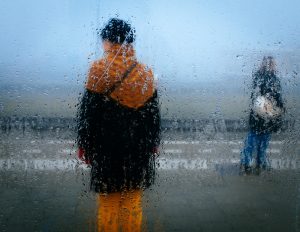Most of us do not get out of childhood without a few scars. Abuse can come in many forms, at any age, and from multiple sources including family, friends, acquaintances and strangers. In the past 40 years, social norms and government rules regarding child abuse and neglect have become much less tolerant.
As compassionate, responsible people, we now have resources to turn to when confronted with the disturbing specter of abuse. So, when we believe we are witness to abuse or signs of it, it is important to understand how it is defined, what to look for, and what to do if you suspect it is going on.
What is the Definition of Child Abuse and Neglect?
As we begin to wrap our heads and hearts around a difficult subject, perhaps it makes sense to begin with the external, societal implications.
According to the Washington State office of the Attorney General, RCW 26-44-020, the definition of child abuse and neglect is injury, sexual abuse, sexual exploitation, negligent treatment or maltreatment of a child by any person under circumstances which indicate that the child’s health, welfare, and safety are being harmed.

It goes on to say that abuse and neglect does not include physical discipline of a child, but there is a regulation which addresses that, as well, RCW 9A.16.100 which states, “It is the policy of this state to protect children from assault and abuse and to encourage parents, teachers, and their authorized agents to use methods of correction and restraint of children that are not dangerous to the children.
“However, the physical discipline of a child is not unlawful when it is reasonable and moderate and is inflicted by a parent, teacher, or guardian for purposes of restraining or correcting the child. Any use of force on a child by any other person is unlawful unless it is reasonable and moderate and is authorized in advance by the child’s parent or guardian for purposes of restraining or correcting the child.
The following actions are presumed unreasonable when used to correct or restrain a child: (1) Throwing, kicking, burning, or cutting a child; (2) striking a child with a closed fist; (3) shaking a child under age three; (4) interfering with a child’s breathing; (5) threatening a child with a deadly weapon; or (6) doing any other act that is likely to cause or which does cause bodily harm greater than transient pain or minor temporary marks.
The age, size, and condition of the child and the location of the injury shall be considered when determining whether the bodily harm is reasonable or moderate. This list is illustrative of unreasonable actions and is not intended to be exclusive.”
We might read the list of unreasonable actions above and cringe at the thought, but these things happen every day. Otherwise decent people are not immune to fits of anger in disciplining a child, or reenacting their own experience of abusive discipline, and some people are not particularly decent to begin with. It is important to understand where the lines are so we are better equipped not to cross them and better identify when someone else may be crossing them.
Recognizing Signs of Child Abuse and Neglect
Here again, the Attorney General’s office has some useful guidelines. The first step in assisting abused or neglected children is educating ourselves on some of the signs. As mentioned above, abuse and neglect does not include physical discipline as defined in the statute. Signs of abuse or neglect may include but are not limited to the following:
The Child:
- Shows sudden changes in behavior or performance in school.
- Has not received treatment for physical or medical problems brought to the parents attention.
- Has learning problems (Or difficulty concentrating) that cannot be attributed to specific physical or psychological causes.
- Is always watchful, as if preparing for something bad to happen.
- Lacks adult supervision, is overly compliant, passive, or withdrawn.
- Comes to school or other activities early, stays late, and does not want to go home.
The Parent:
- Shows little concern for the child.
- Denies the existence of, or blames the child for, the child’s problems in school or at home.
- Asks teachers or other caretakers to use harsh physical discipline when the child misbehaves.
- Sees the child as entirely bad, worthless or burdensome.
- Demands a level of physical or academic performance the child cannot achieve.
- Looks primarily to the child for care, attention, and satisfaction of emotional needs.
The Parent and Child:
- Rarely touch or look at each other.
- Consider their relationship entirely negative.
- State that they do not like each other.
When Abuse and Neglect are Reported
Reports of child abuse and neglect can be made by calling 1-866-ENDHARM (1-866-363-4276), Washington State’s toll-free, 24 hour, 7 days a week hotline, designed to connect you directly to the appropriate local office. It is also important to better understand the potential consequences of making such a call:
Child Protective Services (CPS)

If someone reports a child may be abused or neglected, CPS determines if it meets the criteria for investigation. A report of suspected child abuse or neglect can be made to CPS or the police (dial 911), depending on the severity of the circumstances. Even though CPS staff and the police work together, their investigations are separate. CPS makes family assessments, and the police conduct criminal investigations.
Protective Custody
When it appears that a child is in danger of being harmed, or has already been seriously abused or neglected, a police officer can place the child in protective custody. Custody of the child is then transferred to CPS which places the child with a relative or in foster care. By law, a child can be kept in protective custody for no more than 72 hours, excluding weekends and legal holidays. If the child is not returning to the parents or some other voluntary arrangement made within 72 hours, the matter must be reviewed by a court.
Parental Rights
In very serious cases of abuse and neglect, a child can be removed permanently from the parents. This is called termination of parental rights. When this happens, the child becomes legally free through a court procedure. The parent no longer has any rights or responsibilities towards the child. If a parent voluntarily gives up the child for adoption, the process is called relinquishing parental rights.
Child Welfare Services (CWS)

CWS provides services to children and families with long-standing abuse and neglect problems. Typically these children have been removed from the family home and are in the foster care system. The focus of CWS is to achieve a permanent plan and placement for these children as soon as possible.
Adolescents
There is an array of adolescent services available to families and youths through federal and state funded programs. In addition to the direct services provided by the state, services are funded through contracts with local community agencies enabling them to meet unique needs of each family or youth. For more information regarding what services are available, you can visit https://www.dshs.wa.gov/ca/adolescents.
The Wall of Silence
We have all seen scenes in grocery stores or parking lots or some other public place that made us wonder about the safety of a child. A screaming parent, a cowering child, the kind of language being used, but the nagging question remains – when should we get involved? There are a handful of ready reasons we use for not getting involved:
“It’s None of My Business”
This is a great catch-all for any implications of social responsibility we run up against. It works equally well for homeless people and potential abusers. We are not required by law to report abuse unless we work in a helping profession or certain government agencies. So, we can pretend we didn’t notice, look the other way, walk the other way. We don’t have to avoid it, however. We can make a different choice.
We can Notice, Assess and Decide on appropriate action. Most of the time the appropriate action will be no action at all. An angry mother grabs her misbehaving son a little roughly by the arm and shakes him a little while scolding him. We might reasonably assume if it’s happening here it’s happening at home, but it really does not rise to the point of interfering or reporting.
If the woman backhands her child, knocking him to the ground, hopefully someone gets between her and the child and tries to defuse the situation. If she notices the attention and drags the child from the store to her car, hopefully someone gets the license number of the car and calls the abuse hotline. If we allow our default stance to be “it’s none of my business,” we will miss opportunities to be compassionate to our neighbors.
“It’s Not My Kid”
This is a subset of the reason above. Yes, it’s not my child but I still need to Notice, Assess and Decide whether or not I need to take action. The law gives parents enormous leeway in how they parent their children, and the last place any judge wants to end up is termination of parental rights. Fortunately, that decision is not our responsibility.

As noted earlier, if I report someone for suspected child abuse or neglect, it may result in an investigation, and depending on the outcome, may result in termination of parental rights. None of those outcomes, or any other, is my responsibility.
We cannot predict the future, but if we have good reason to believe the safety of a child is at stake, reporting it is the compassionate thing to do for all involved. The adult may get the help they need and the child may end up in a better situation, but we are not responsible for the outcome. We can only do the best we can based on the available information.
“It Makes Me Uncomfortable”
Yes, and of course it does. Most of us do not enjoy confrontation or feeling like we are ratting someone out. Here again, we can make room for our discomfort and look beyond it – Notice, Assess and Decide. There are many opportunities to do good that will pass us by if we allow our discomfort to drive the bus.
Acknowledge the discomfort is there, take a deep breath and blow it out, then ask the question, “Is it appropriate for me to take action here, and if so, what is it?” If we report someone for good reason, it is ultimately for their own good.
A person with pathological anger issues who is not treated may permanently injure or kill someone. One of the requirements for people who end up in the system for abuse is counseling for anger management and other issues. The cycle must be interrupted, and sometimes a report to an abuse hotline can be the beginning of recovery for the abuser.
What the Bible Says
There are a number of verses that could be taken out of context and used to support the case for action or the case for inaction. “Am I my brother’s keeper?,” “Do not resist an evil person,” “whoever spares the rod, hates his son.”
There is a huge difference between hitting your child in anger, especially in public, and calmly administering physical punishment (spanking) in private and without deliberate shaming. If you are witnessing signs of abuse in public or private, perhaps the best question is to ask is, “What does it mean for me to love my neighbor in this situation?”
Under specific circumstances, it is everyone’s responsibility to protect little ones, whether the law requires it or not. If you have a moment when confronted with a situation, try to see yourself from the outside, like watching a movie. If you were watching you, would your conscience demand you take some sort of action? It’s not an easy question.
You have to decide about your own safety, and how best not to make a bad situation worse. Perhaps most importantly, we don’t have to allow our fears to stop us from making any choice at all. Be curious and kind to yourself in this context. Wondering about it can be the beginning of change.
“Alone,” courtesy of Francesca Dioni, Flickr Creative Commons, CC0 License; “Man,” courtesy of Pezibear, Pixabay.com, CC0 Public Domain License; “Girl with Copper Hair,” courtesy of tintenfieber, pixabay.com, CC0 Public Domain License; “Rainy Day,” courtesy of tookapic.com, CC0 License






